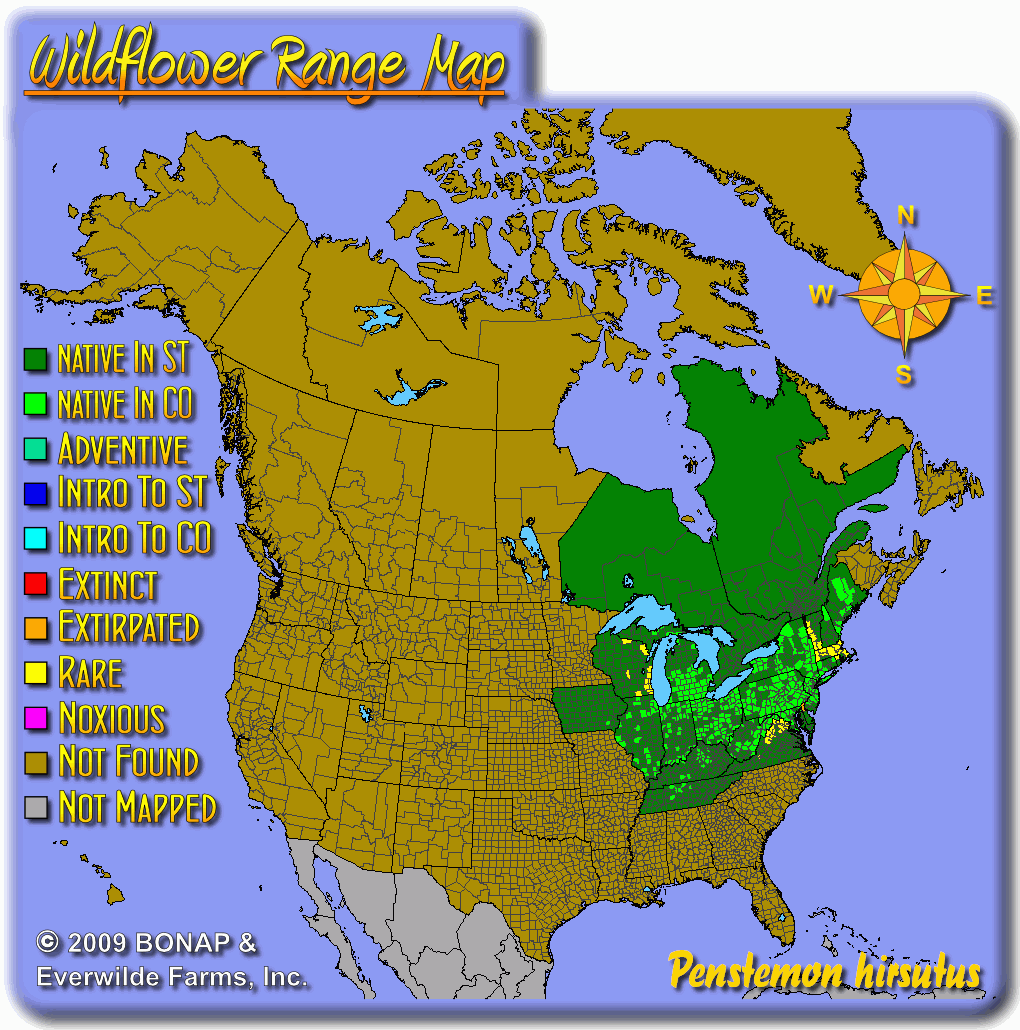Hairy Beardtongue Seeds
- HOW TO GROW
- FAST FACTS
- REVIEWS
HOW TO GROW
Sowing: Direct sow in late fall, pressing into the surface of the soil since this hairy beardtongue seed needs light to germinate. For spring planting, mix the Penstemon Hirsutus seeds with moist sand and store in the refrigerator for 30-60 days before planting. Keep the soil lightly moist until germination. This seed can also be started indoors 6-8 weeks before planting in the spring.
Growing: Water seedlings until they become established. Mature plants tolerate drought well because of a well-developed tap root, though they can also tolerate moist soil. This plant grows well in rocky or sandy soil, and has excellent resistance to disease and pests. After blooming cut the plant back to several inches above the soil, unless seed is wanted. This plant often self-sows, and is highly attractive to bumblebees, hummingbirds, and butterflies.
Harvesting: For cut flowers, choose stems with flowers that have just opened. Strip the foliage that will fall below the water level, and place in water immediately.
Seed Saving: After the flowers fade, small pods will form that eventually open at the top to reveal the ripe seeds. Gather the seeds as soon as the pods have begun to open; watch them carefully to prevent loss, since the seeds can easily be blown away by the wind. Store the hairy beardtongue seed in a cool, dry place.
FAST FACTS
Common Names: Dwarf Hairy Penstemon
Latin Name: Penstemon hirsutus
Species Origin: US Native Wildflower
Type: Native Wildflowers
Life Cycle: Perennial
USDA Zones: 3, 4, 5, 6, 7
US Regions: Midwest, Northern, Northeast
Seeds per Ounce: 50,000
Stratification: Cold/Wet for 8 Weeks
Germination Ease: Stratify 8 Weeks
Sunlight: Full Sun, Part Sun, Shade
Height: 24 Inches
Color: Purple
Bloom Season: Blooms Late Spring, Blooms Early Summer
Uses: Attracts Pollinators, Hummingbirds, Cut Flowers, Deer Resistant
Great plant
Easy to start and spread. Early bloomer and bees love the flowers. Great seeds from Everwilde!
Wrong species sent!
I did not receive the hairy beardtongue. I was sent compass plant seeds instead. Out of the three species I ordered, only two were supplied correctly.
DESCRIPTION

HOW TO GROW
Sowing: Direct sow in late fall, pressing into the surface of the soil since this hairy beardtongue seed needs light to germinate. For spring planting, mix the Penstemon Hirsutus seeds with moist sand and store in the refrigerator for 30-60 days before planting. Keep the soil lightly moist until germination. This seed can also be started indoors 6-8 weeks before planting in the spring.
Growing: Water seedlings until they become established. Mature plants tolerate drought well because of a well-developed tap root, though they can also tolerate moist soil. This plant grows well in rocky or sandy soil, and has excellent resistance to disease and pests. After blooming cut the plant back to several inches above the soil, unless seed is wanted. This plant often self-sows, and is highly attractive to bumblebees, hummingbirds, and butterflies.
Harvesting: For cut flowers, choose stems with flowers that have just opened. Strip the foliage that will fall below the water level, and place in water immediately.
Seed Saving: After the flowers fade, small pods will form that eventually open at the top to reveal the ripe seeds. Gather the seeds as soon as the pods have begun to open; watch them carefully to prevent loss, since the seeds can easily be blown away by the wind. Store the hairy beardtongue seed in a cool, dry place.
FAST FACTS
Common Names: Dwarf Hairy Penstemon
Latin Name: Penstemon hirsutus
Species Origin: US Native Wildflower
Type: Native Wildflowers
Life Cycle: Perennial
USDA Zones: 3, 4, 5, 6, 7
US Regions: Midwest, Northern, Northeast
Seeds per Ounce: 50,000
Stratification: Cold/Wet for 8 Weeks
Germination Ease: Stratify 8 Weeks
Sunlight: Full Sun, Part Sun, Shade
Height: 24 Inches
Color: Purple
Bloom Season: Blooms Late Spring, Blooms Early Summer
Uses: Attracts Pollinators, Hummingbirds, Cut Flowers, Deer Resistant
Reviews
Review
Great plant
Easy to start and spread. Early bloomer and bees love the flowers. Great seeds from Everwilde!
Review
Wrong species sent!
I did not receive the hairy beardtongue. I was sent compass plant seeds instead. Out of the three species I ordered, only two were supplied correctly.






